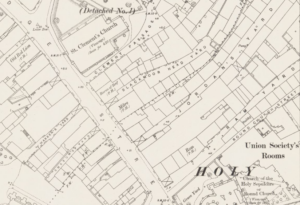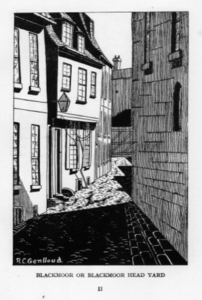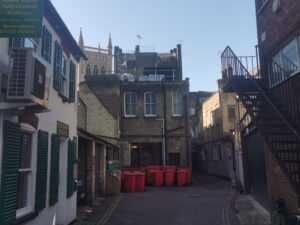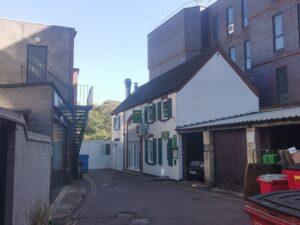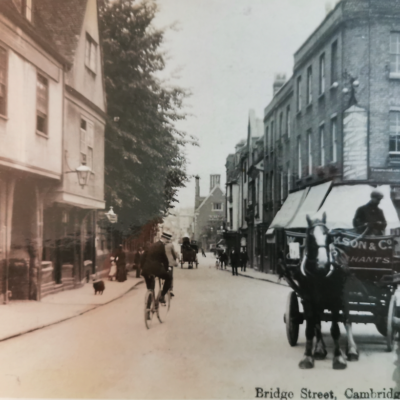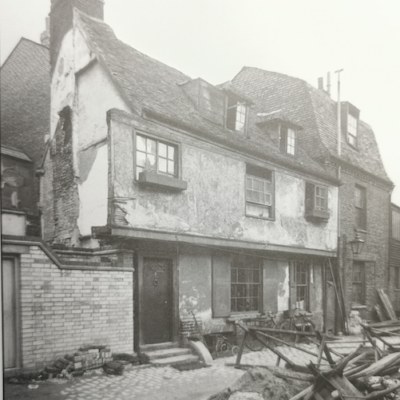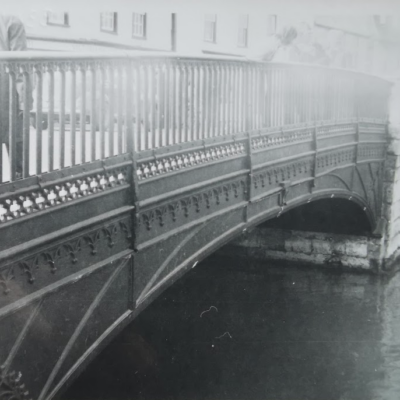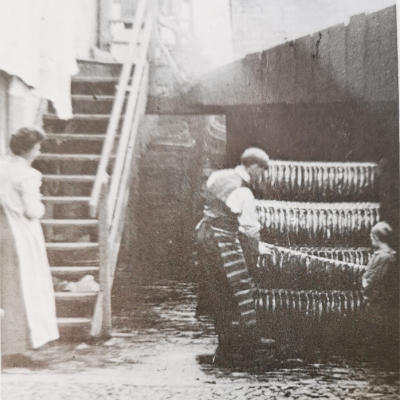Search by topic
- archaeology
- Building of Local Interest
- charity
- church
- crime
- dressmaker
- fire
- Great Eastern Railway
- Listed building
- Mapping Relief
- medieval
- oral history
- poverty
- Public House
- Rattee & Kett
- Religious House
- Roman
- scholar
- school
- Then and Now
- tudor
- women
- work
- world war one
- world war two
Search by text
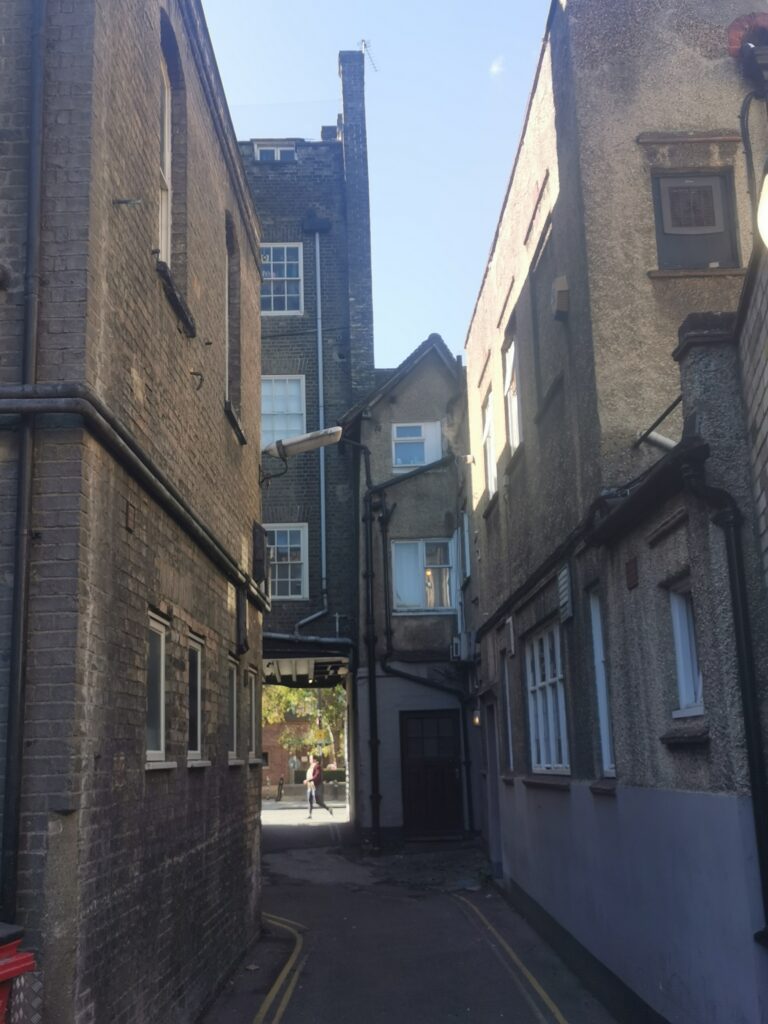 Blackmoor Head Yard (RGL 2022)
Blackmoor Head Yard (RGL 2022)Blackmoor Head Yard
History of Blackmoor Head Yard
This was an alleyway perpendicular to Bridge Street between the Mitre Hotel (17) and The Baron of Beef (19). In 1913 there were 12 addresses there.
In 1825 there was a livery occupying part of the garden behind the Blackmoor Head Yard run by Henry Browning. St John’s College granted him a lease in that year. The livery was next to ‘the Dunghill’, a source of local nuisance.
For data on recipients of Cambridge Charity Organisation Society support see Mapping Relief.
1861
(1) William Chamberlain, 54, groom, b Gravely
(2) Charlotte Piper, 63, lodging house keeper, b Suffolk
(3) Mary Bell, 60, bedmaker, b Cambridge
(4) Thomas Bridges, 44, college servant, b Cambridge
(5) George Robinson, 47, tailor, b Beds
(6) Samuel Lovejoy, 43, labourer, b Berks
(7) Frederick Lewis, 47, labourer, b Cambridge
(8) Robert Holliday, 36, potato merchant, b Lincs
(9) William Horner, 39, groom, b Fen Drayton
1881
1891
6. St Clement Sunday School
1913
1. Harry G Pilcher
2. Mrs E Golding
3. John Graves, plasterer’s labourer
4. Mrs Ward
5. William Farnfield
6. Cox Motor Cab Company
7. R Darkins, relief stamper
8-9. Mrs Priest
10. Arthur Willis
11. Mrs Seymour
12. Mrs Ellen Clerk, Henry Buck jobmaster
1962
Blackmoor Head Press
Allen & Philips, sign and van writers
2022
Contribute
Do you have any information about the people or places in this article? If so, then please let us know using the Contact page or by emailing capturingcambridge@
License
This work is licensed under CC BY-NC-SA 4.0





